Lenovo Legion 5 vs. 7: Battle of the gaming brothers
Welcome to the Legion 5 vs. Legion 7 battle arena. This is the wrestling match you’ve been waiting for if the Lenovo gaming brothers have caught your eye, but you’re unsure if the higher-end Legion 7 is worth the extra cash.
The Legion 5 and the Legion 7 — successors to the Legion Y540 and Legion Y740 — both have made appealing upgrades with Intel’s Comet Lake H-series processors and Nvidia 20-series Super GPUs. However, the pricier Legion 7 does have a slight edge over the Legion 5 with a bigger battery, better build quality and a swankier GPU, but is the Legion 7 really worth the extra cash?
In this face-off, we’ll watch the Legion 5 and Legion 7 tussle in the ring to help you figure out which gaming sibling offers the best value for your hard-earned money.
Lenovo 5 vs. 7: Specs compared
| Lenovo Legion 5 | Lenovo Legion 7 | |
|---|---|---|
| Price | $1,099 | $2,749 |
| Colors | Phantom Black | Black |
| Display | 15.6-inch, 1080p, 120Hz | 15.6-inch,1080p, 240Hz |
| CPU | Intel Core i7-10750H | Intel Core i7-10750H |
| GPU | NVIDIA GeForce GTX 1660 Ti | Nvidia GeForce RTX 2080 |
| RAM | 8GB | 16GB |
| Storage | 512GB SSD | 2TB SSD |
| Size | 14.3 x 10.2 x 0.9 inches | 14.1 x 10.2 x 0.78 inches |
| Weight | 5.4 pounds | 5 pounds |
Lenovo Legion 5 vs. Lenovo Legion 7: value and configuration
The Legion 5 has a starting price of $999 and features a 2.5-GHz Intel Core i5-10300H CPU with 8GB of RAM, a 128GB PCIe NVMe SSD, an Nvidia GeForce GTX 1650 with 4GB of VRAM, and a 15.6-inch, 1080p display with a 60Hz refresh rate.
The review unit I tested costs $1,099 and upgrades you to a 2.6-GHz Intel Core i7-10750H CPU with 8GB of RAM, a 512GB PCIe NVMe SSD, an Nvidia GeForce GTX 1660 Ti GPU with 6GB of VRAM, and a 120Hz display.
The Legion 7 has a starting price of $1,229 and is packed with a 2.5-GHz Intel Core i5-10300H CPU, 8GB of RAM, a 256GB SSD, an Nvidia GeForce GTX 1660 Ti with 6GB of VRAM, and a 15.6-inch, 1080p, 144Hz display.
The review unit I tested costs $2,749 and upgrades you to 2TB of SSD storage, an Nvidia GeForce RTX 2080 Super Max-Q GPU with 8GB of VRAM and a 240Hz display.
Winner: Legion 5
Lenovo Legion 5 vs. Lenovo Legion 7: design
Both the Legion 5 and the Legion 7 fly under the radar when it’s time to focus on work thanks to their muted aesthetics and dusky, understated chassis. The only splash of fun you’ll find on both laptops are the iridescent “Legion” logos sprawled along the top-left side of their lids.
But when it’s time to party, the Legion 7 parties harder. The Legion 5 gets groovy with eye-catching RGB lighting on its keyboard, but the Legion 7 kicks it up a notch with colorful illumination that emanates from the side of the chassis, the dual vents and a badass-looking “Y” figure on the lid.
The Legion 5 features an all-plastic build, but when I experimented with it, I found the quality to be surprisingly sturdy. The Legion 7, on the other hand, sports an all-aluminum chassis that contributes to the laptop’s solid backbone.
Open the lid, and you’ll find that both laptops have thin bezels, but the Legion 7’s bezels are slimmer. A 720p webcam is housed on the top bezel of both gaming rigs. However, the chins on the Lenovo brothers are huge and feature the Legion logo.
On the Legion 5 and Legion 7, you’ll find a power button that doubles as a color-coded indicator to tell users which one of three power settings is currently activated: performance mode (red), quiet mode (blue) or balance mode (white). Users can quickly oscillate between modes by pressing the Fn + Q keys.
The Legion 5 and 7 also sport a 180-degree lay-flat hinge. The back chassis of both laptops protrude to support dual air vents and a variety of ports.
Along the undercarriages of both laptops, you’ll find a large vent and a pair of rubber feet for optimal cooling. The Legion 5, sporting dimensions of 14.3 x 10.2 x 0.9 inches and weighing 5.4 pounds, is heavier and thicker than the Legion 7 (14.1 x 10.2 x 0.8 inches, 4.9 pounds).
Winner: Legion 7
Lenovo Legion 5 vs. Lenovo Legion 7: ports
The Legion 5 and Legion 7 have a wide variety of ports, however, they do not offer the same connection options.
Let’s start with the Legion 5. On the back, you’ll find an Ethernet port, a USB Type-C port, two USB Type-A ports, an HDMI 2.0 port, a power jack, and a Kensington security lock slot. On the left side, you’ll find an always-on USB Type-A port and a headset jack. On the right, you’ll discover another USB Type-A port.
On the back of the Legion 7, you’ll find an HDMI 2.0 port, a Kensington lock slot, a USB Type-A port and an Ethernet port. On the left side, there is a headset jack, a USB Type-C port and a Thunderbolt 3 port. On the right, you’ll find another USB Type-A port and the OneKey Recovery button, which restores your system in case of a crash.
To sum it all up, while the Legion 5 offers more USB Type-A ports for a total of four, the Legion 7 serves up a Thunderbolt 3 port and a OneKey Recovery button. The Legion 5’s sole USB Type-C port is not Thunderbolt 3 and does not deliver power, however, it does support data transfer and display out. If these ports don’t satisfy your needs, you can always use an adapter, so be sure to check out our best USB type-C hubs page.
Lenovo Legion 5 vs. Lenovo Legion 7: display
The Legion 5 and Legion 7 come with 15.6-inch, 1080p displays. The duo can be configured with up to 240Hz screens. The Legion 5 I reviewed came with a 120Hz display and the Legion 7 featured a 240Hz panel.
I was indifferent about the Legion 5’s display when I tested it. I navigated through a lavish, intricate mansion in Dishonored 2, and while I was satisfied with the panel’s colors and details, the Legion 7’s display was far more impressive. While playing Hitman (2016) on the Legion 7, I was blown away by the colorful, vibrant stalls I saw as I passed a lively souk in Marrakesh. On Hitman 2, I feasted my eyes on tangible textures inside a swanky bedroom where I spotted a leather-clad headboard, a velvet comforter and a satin pillowcase.
It’s also worth noting that the Legion 5 I tested is equipped with Nvidia’s G-Sync support — I cannot say the same for my Legion 7.
The Lenovo 5 could only reproduce 40% of the DCI-P3 color gamut, but the Legion 7 offered a DCI-P3 color-coverage score of 72%. The Legion 7 also outshone its sibling when it comes to screen brilliance, emanating a shining 445-nit display. The Legion 5, on the other hand, is dim with a brightness of 287 nits.
Winner: Legion 7
Lenovo Legion 5 vs. Lenovo Legion 7: keyboard and touchpad
The Legion 5 and Legion 7’s keyboards are relatively comfortable to type on. The keys are very quiet, so you can tap away at work without disturbing fellow co-workers or annoying colleagues during video calls with loud clicking.
My only gripe about these keyboards is the full-sized numpad addition, which makes the keyboard feel slightly cramped. I often found my fingers landing on the nearby Num Lock key instead of Backspace. On the plus side, both keyboards feature shield-shaped, concave keys, which adds an extra layer of comfort for your fingertips.
I achieved my usual 85 words-per-minute average on the 10fastfingers.com typing test with the Legion 5. However, on the Legion 7, I nailed a 90-wpm score, which is notably faster than my 85-wpm average. The one-piece trackpads on both keyboards were smooth and responsive when I experimented with Windows 10 gestures, such as pinch-to-zoom and three-finger swipe for opening all windows.
The Legion 5 offers three levels of brightness for white backlighting as well as four-zone RGB lighting, but the Legion 7 offers more pizazz when it comes to its colorful illumination. With the Legion 7, you can cycle between a number of different eye-catching, colorful lighting animations, including a spiraling rainbow and a stationary blue backlight. You can also customize your own illuminating light show with the pre-installed Corsair iCue software. The software can control per-key RGB and each lighting zone.
Winner: Legion 7
Lenovo Legion 5 vs. Lenovo Legion 7: gaming, graphics and VR
An Nvidia GeForce GTX 1660 Ti GPU electrified the Legion 5 while an Nvidia GeForce RTX 2080 Super Max-Q GPU powered the Legion 7. Unsurprisingly, the Legion 7 kicked the Legion 5’s butt in this round.
On the Assassin’s Creed Odyssey benchmark (High, 1080p), the Legion 5 reached 43 frames per second, lagging behind the Legion 7’s 63 fps. The Legion 5 hit 45 fps on the Borderlands 3 benchmark, which could not keep up with the Legion 7’s average of 70 fps. On the Grand Theft Auto V benchmark, the Legion 5 averaged 64 fps while the Legion 7 sailed past its sibling with a sweet 90 fps.
If you’re interested in the Legion brothers’ VR performance, the 5 achieved a score of 5,013 on the VRMark Orange benchmark while the 7 knocked it out of the park with a score of 7,900.
Winner: Legion 7
Lenovo Legion 5 vs. Lenovo Legion 7: performance
Now let’s take a look at the Legion brothers’ multitasking capabilities. I put the Legion 5’s Intel Core i7-10750H CPU and 8GB of RAM to the test by swamping it with 40 Google Chrome tabs, including a Twitch live stream, a Netflix film and a 1080p YouTube video. When I pulled up Google Docs and began plugging away, I was impressed that there was no lagging at all.
I challenged the Legion 7’s Intel Core i7-10750H CPU and 16GB of RAM to face an avalanche of 40 Google Chrome tabs. I also fired up two Twitch streams, which played simultaneously. The Legion 7 didn’t even break a sweat. There was no lag as I continued to zip through the web.
On the Geekbench 5.2 overall performance benchmark, the Legion 5 scored 5,342, trailing behind the Legion 7’s score of 5,940.
During the Handbrake test, the Legion 5 transcoded a 4K video to 1080p resolution in 10 minutes and 5 seconds, which is slower than the Legion 7’s 9 minutes and 10 seconds.
The Legion 5’s 512GB SSD duplicated 25GB of multimedia files in 28 seconds, which translates to a transfer rate of 958.8 megabytes per second. The Legion 7’s 2TB SSD completed the same test in 20 seconds, which translates to a transfer rate of 1,342.4 MBps.
Winner: Legion 7
Lenovo Legion 5 vs. Lenovo Legion 7: battery life
For a gaming laptop, the Legion 5 impressed me with its long battery life. The Legion 5 lasted 7 hours and 13 minutes on the Laptop Mag battery test, which consists of browsing the web continuously over Wi-Fi at 150 nits of brightness. The Legion 7, on the other hand, died at four hours and 37 minutes.
Winner: Legion 5
Overall winner: Lenovo Legion 7
It’s no surprise that the Lenovo 7 is the champion of this wrestling match. The pricier Lenovo brother kicked butt in all rounds except battery life, which was expected. The question here is not whether the Legion 7 is better (we all know that it is). What we really want to know is if the Lenovo 7 is worth an extra $230.
In my opinion, if having a better-performing, thinner, lighter, Thunderbolt 3-possessing laptop with a brighter, more colorful 240Hz display isn’t your jam, then by all means, get the Legion 5. I should also add that the Legion 7 also offered an average of 23 more frames on gaming benchmarks compared to its cheaper counterpart. Due to the significant upgrade in specs and performance, the Legion 7 is certainly worth the investment.
from WordPress https://ift.tt/3j44p4M

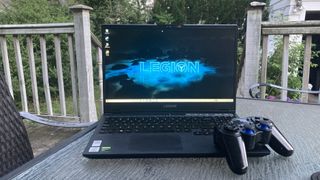
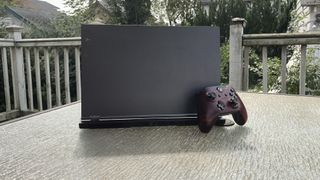
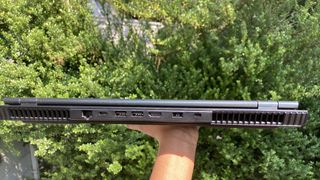
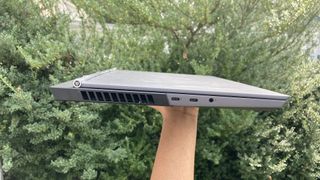
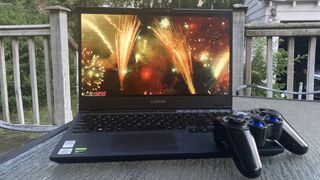
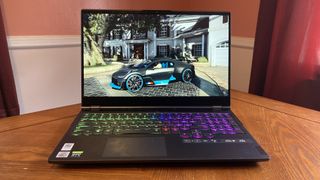
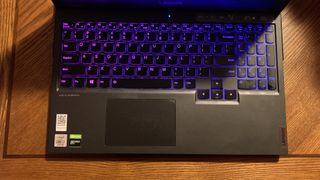
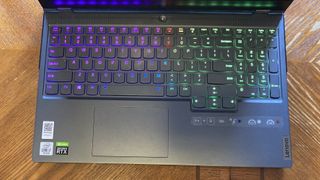
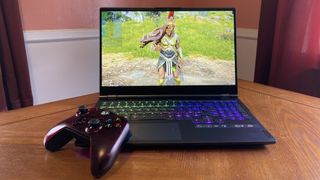
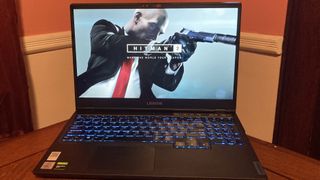
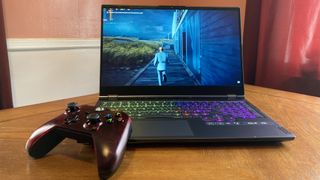
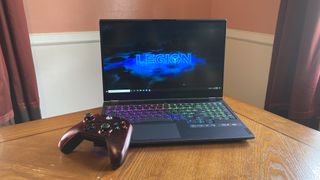



Comenta